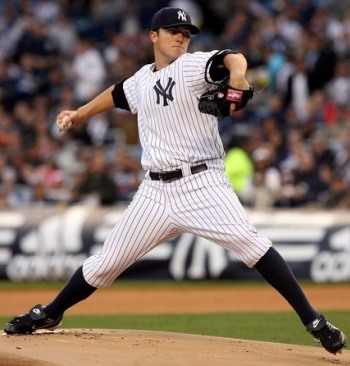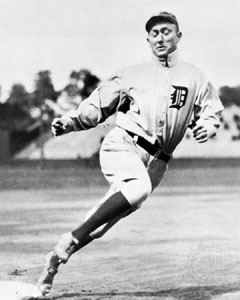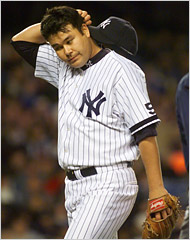Rob Neyer (mercifully back from vacation this week) mentioned today how the Kansas City Royals are seeing a significant increase in attendance this year, this despite fielding perhaps the worst team in the American League, and easily one of the worst three or four in major league baseball.
The reasons for this, as he says, are fairly obvious:
So what's going on? It's not rocket science. The Royals are essentially playing in a new ballpark, and the people want to see it. The Nationals' attendance went up nearly 400,000 in their first season in Nationals Park; this season it's going to drop roughly 500,000. And roughly the same thing will happen to the Royals' attendance next season.He's right of course. There was some hope in Kansas City in May, when the Royals still had a winning record and their ace was on the cover of Sports Illustrated, but that's all gone now. The Royals weren't good enough for long enough to really do anything to help the attendance, which usually takes most of a year to increase due to team quality.
So I'm not writing to argue with Rob, but to mention a few things I noticed when I got to attend a game at Kauffman Stadium in May. First of all, even if I hadn't known who was pitching that night, all I had to do was look around the ballpark.
 Zach Greinke allowed a run in the first and was all but untouchable for the rest of the game. His complete game beat the Tigers (and their surprising ace, Edwin Jackson) easily, though he hasn't been nearly so untouchable since. He was 8-1 with a 0.84 ERA when that game ended, but he's gone just 3-6 with a 3.84 ERA in the mean time. And he still might be the best pitcher in baseball, overall.
Zach Greinke allowed a run in the first and was all but untouchable for the rest of the game. His complete game beat the Tigers (and their surprising ace, Edwin Jackson) easily, though he hasn't been nearly so untouchable since. He was 8-1 with a 0.84 ERA when that game ended, but he's gone just 3-6 with a 3.84 ERA in the mean time. And he still might be the best pitcher in baseball, overall.As far as the ballpark, I can see why people would go. It was already a nice park, as I understand it, but it's truly an impressive sight now. The famous fountains in the outfield are now even broader and taller, and the already ridiculously large JumboTron in the outfield has been replaced with an even more ridiculously large High Definition version.
The advancement of technology is a wonderful thing, generally making life better for all who come in contact with it, with the noted exception of those on the receiving end of advances in military equipment.
Speaking of bombardment (see what I did there?) I think the scoreboard in center field is a bit too much.
For one thing, it's about the size of Pangea, but even worse than the size itself is that because the new high definition capabilities allow the team to put more information on the screen, the people who run things feel compelled to use every last pixel of it.
Don't misunderstand me. I'm an engineer. A numbers guy. A details guy. I'm all for giving fans more than the standard AVG/HR/RBI and a picture of the batter. And while I don't exactly see the point in those random statistics they put up there before each at-bat, presumably to encourage the batter*, who almost definitely does not take the time to read them, I don't really mind them either.
* I once attended an Interleague game in Philadelphia against the Yankees and I laughed when Rico Brogna came to the plate and his blurb said, "Rico is 5th in the National League with 223 at-bats." He was supposed to be their cleanup hitter, but entered the game with a .256/.314/.404 line that suggested he hadn't been cleaning up much of anything. I remarked how funny I thought it was when the best thing they could come up with to say about him amounted to, "Well, he sure goes up to the plate a lot!" and the snark had barely escaped my big mouth when Brogna uncorked on an Andy Pettitte pitch and hit a 2-run homer high off the right field foul pole.
Anyway, at Kansas City they put EVERYTHING on the board at once:
- A picture of the batter, usually trying to look menacing.
- Some silly stat (see above).
- His AVG/HR/RBI numbers (of course)
- Totals for at-bats and Hits (which are now redundant), doubles, triples and steals
- His OBP, Slugging and OPS (yay!), which in subsequent at-bats are replaced by...
- His career numbers for whatever particular situation he happens to find himself
- His height, weight, and handedness both for hitting and throwing, even though these last two are obvious if you're actually watching the game
- His birth date (OK...?)
- His birthplace, apparently in case there are people who cheer more loudly for those born in Petosky, Michigan than say, Los Angeles or Puerto Rico. Later in the game, these last three get replaced by...
- His record for each previous at-bat
- The hitting team's lineup, including their batting averages, positions and uniform numbers
- The name and number of the pitcher
- The pitch speed
- The defensive alignment
- The three batters due up for the other team, with their AVG/HR/RBI numbers
- The line score, including runners left on base
- The last hitter's accomplishment(s)
- The ball/strike/outs count
- and last but not least, the official game time.

This is, obviously, fairly overwhelming. And in the case above, apparently the sixty-nine (I counted) different numbers and stats they already had on the board were not sufficiently overwhelming for the Royals' tastes. In an effort to either impress the masses or perhaps to confuse and scare the opposition, they for some reason decided that Jose Guillen needed MORE numbers on the screen with him, so they stuck a "6540132" in the graphic behind him.
Does anybody have any idea what this is? Is it Guillen's phone number? If, so what's the area code? Should we use his OBP for that? What if he goes into a slump? Wait, never mind. Technically that's impossible for Guillen.
Maybe that's how much they still owed him from his 2009 salary? His height in millimeters? his weight in dynes? Maybe it's supposed to look like a prison number, and they're trying to scare the Tigers' pitchers into letting him hit, lest they should get shivved by inmate #6540132. If so, it worked, as Guillen went 2-for-4 with a homer.
Anyway, other than the inmate numbers, many of these things also appear somewhere in most ballparks, but almost nobody else has a scoreboard big enough to handle all of it at the same time. The one in the New Yankee Stadium might do it, but I haven't been there yet, so I can't attest to how well they use theirs. But subtle is not the Yankees' style, so I'm guessing that theirs is even worse.
Regardless, the profusion of information on the socreboard in KC is clearly too much. For one thing, you can't possibly take in all of that before each at-bat, and you shouldn't want to. Going to a baseball game is supposed to be about watching the athletic competition and smelling the grass and the dirt and the hot dogs and peanuts and cheering on your team, not constantly having your eyes drawn back to the scoreboard, even if you don't care what Jose Guillen's career numbers are against right-handed pitchers on Tuesday nights with runners on 2nd and 3rd.
Another problem with it is that if there's some kind of technical glitch, all you get is a huge, blue Royals logo. And that bright blue light coming off the enormous screen casts a pallor over everyone and everything in the park, so that the fans in the seats all look like they're extras in a Tim Burton movie.

A screen like this would be great if it were just used for some of those things. Some of the relevant numbers, a picture, the score...that's all fine. You could show replays of significant events of the game, and perhaps even replays of controversial ones. Major League Baseball specifically does not do this last thing because it would inevitably lead to rampant umpire lynchings.
But still, it would be nice to see, on a 200-foot HD screen, no less, exactly where that last pitch crossed the plate (if at all), or whether that ball was fair or foul, or if the runner was really tagged out. In theory, doing this should save umpires about as much grief as it would cause, but in reality it's more likely that umpires would just end up calling every close play for the home team to avoid the aformentioned lynchings. Hard to blame them.
So that's not going to happen any time soon. But whatever they do, they've got to find a way to make the screen a little less scary.
On the other hand, as bad as the Royals have been - they're 25-57 since their high-water mark of 18-11 on May 7th - maybe the fans need to be distracted from what's happening on the field as much as possible.













